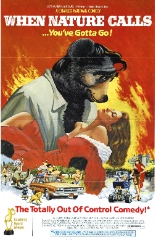
 Easily one of the best flicks in the Troma Entertainment library, When Nature Calls looks like it was concepted, written and shot all within a day’s time. At any rate, it’s still fairly funny. Although it tries to be a scattershot spoof in the Airplane! vein, it works best when director and co-writer Charles Kaufman (1980’s Mother’s Day) doesn’t try to cram a jillion things into the frame.
Easily one of the best flicks in the Troma Entertainment library, When Nature Calls looks like it was concepted, written and shot all within a day’s time. At any rate, it’s still fairly funny. Although it tries to be a scattershot spoof in the Airplane! vein, it works best when director and co-writer Charles Kaufman (1980’s Mother’s Day) doesn’t try to cram a jillion things into the frame.
No plot exists; the shell of the picture follows a suburban family as its members move from the big city to the great outdoors for no particular reason, other than to thumb its nose at many an outdoor family film, from Old Yeller to the Adventures of the Wilderness Family. For example, in one of its best sight gags, animals from the whole of both hemispheres reside together in the forest.
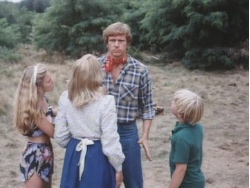 The daughter rapes a bear and becomes pregnant. Some four-legged friends are tortured. Stock footage of a vicious cougar threatens the family unit. C-level celebrities like Morey Amsterdam, Willie Mays, John Cameron Swayze and G. Gordon Liddy make pointless cameos. In an early-career role, future Oscar nominee and Bourne Identity franchise player David Strathairn plays Weejun, “the Kaopectate Indian,” who befriends the fam.
The daughter rapes a bear and becomes pregnant. Some four-legged friends are tortured. Stock footage of a vicious cougar threatens the family unit. C-level celebrities like Morey Amsterdam, Willie Mays, John Cameron Swayze and G. Gordon Liddy make pointless cameos. In an early-career role, future Oscar nominee and Bourne Identity franchise player David Strathairn plays Weejun, “the Kaopectate Indian,” who befriends the fam.
If you make it to the intermission sequence, you’ll be treated to a wickedly funny parody of that classic animated commercial that enticed drive-in patrons to hightail it to the lobby for sticky and/or sugary concessions. It begins with the usual dancing candy bars and soda cups, before a couple of frankfurters snort coke and commence bodily gratification. Although sloppier than a sloppy joe, When Nature Calls possesses enough good throwaway gags like that to merit a viewing. —Rod Lott

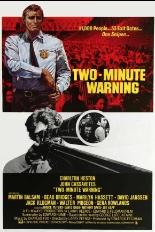
 Nearly a quarter-century before he famously dared Washington, D.C. to pry his rifle “from my cold, dead hands,” Charlton Heston tried to separate a sniper from his weapon of choice in the sports-world thriller
Nearly a quarter-century before he famously dared Washington, D.C. to pry his rifle “from my cold, dead hands,” Charlton Heston tried to separate a sniper from his weapon of choice in the sports-world thriller 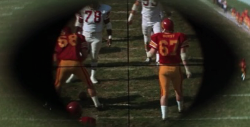

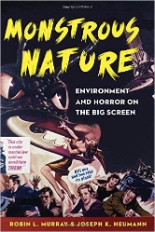
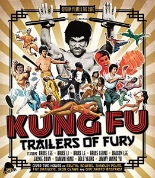
 A summary of Severin Films’
A summary of Severin Films’ 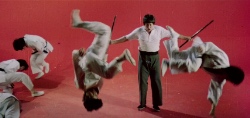
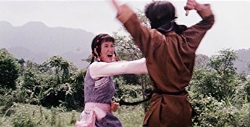
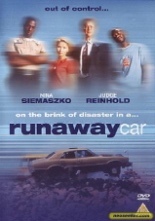
 Imagine
Imagine 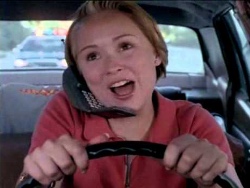 For all its cinematic theft, Runaway Car is damned entertaining. More telefilms should be like this, and being steered by Jack Sholder (
For all its cinematic theft, Runaway Car is damned entertaining. More telefilms should be like this, and being steered by Jack Sholder (